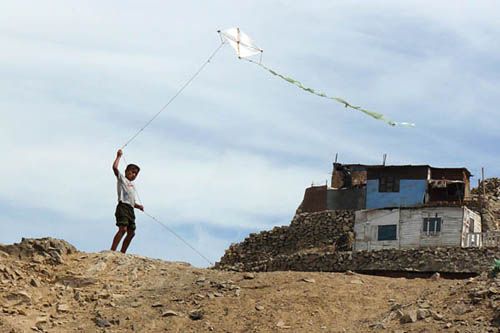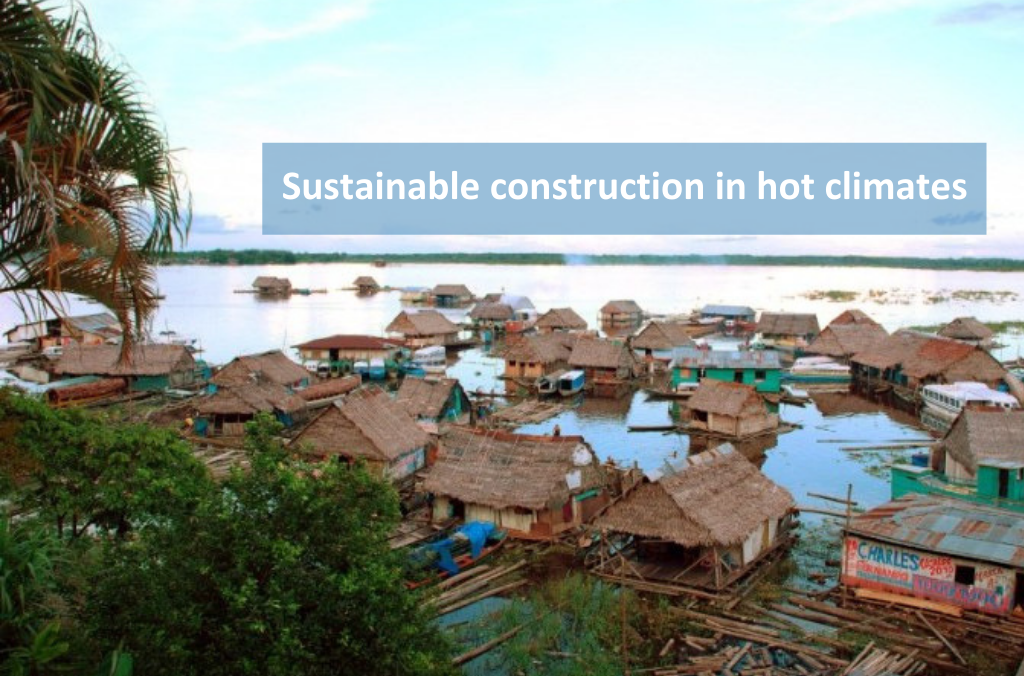[Hot climates - dossier] #17 - Sustainable construction in Peru between informality, unskilled labour, self-construction and corruption
![[Hot climates - dossier] #17 - Sustainable construction in Peru between informality, unskilled labour, self-construction and corruption](https://www.construction21.org/data/sources/users/32073/photo-principale.jpg)
Building a sustainable city is, by its very nature, building for the day after tomorrow, technically, of course, but also socially and climatically. But what about when, thinking about tomorrow is already difficult? This is the equation faced by many stakeholders working in the tropical fringe. In this respect, Peru is an excellent case study because of the number of hot climates on its soil, the country's sensitivity to climate change and a complex social reality. As we will see, this last point is essential in the proper implementation of sustainable policies. Living is indeed a social, economic and cultural act inseparable from the context surrounding it.
2019, like 2018 and probably 2020, is the year of all temperature records in Peru, with peaks and troughs never reached at any point on the coastal fringe. The latter, subject to the vagaries of the Humbold Current, is indeed very sensitive to variations in ocean temperatures, whether natural (el nino phenomenon) or accelerated by global climate change. Thus, in Peru's coastal territory, areas that, in the past, could be described as hot, in the traditional sense of the definition, are no longer necessarily so. Over the past decade or so, winters have been colder and summers warmer.
Moreover, 2019 will also remain the year in which Peru will have completed the incarceration or house arrest of all its presidents elected since 1985. Why is this news of interest to us when it comes to sustainable construction in hot climates? Quite simply because it is the visible part of a political clientelism that pays little attention to global warming and the measures needed to combat it.
1. Lack of planning: an alarming observation
1.1 Rapid and spontaneous urbanization
Like many tropical countries, Peru is indeed the scene of rapid and disorderly urbanization. At the macro level, it requires real decision-making to reorganize and redesign cities and, at the micro level, to rethink the habitat as it has developed over the past thirty years. In buildings that are poorly designed or adapted to another reality, the return to acceptable comfort temperatures often requires the systematic use of air conditioning and electric heating. The latest episodes of cold and heat waves have thus led to a situation never seen before: we are witnessing a massification of this comfort equipment, just limited by the economic precariousness of a part of the population living in hot climate zones. This is a huge challenge. Not only does it potentially affect nearly 20 million people, and, in a country in constant economic competition with its neighbours, opening markets for new household appliances is a boon to sustain GDP growth in the short term. This growth is synonymous with good-point for a political class that is extremely dependent on the lobbies that finance it.
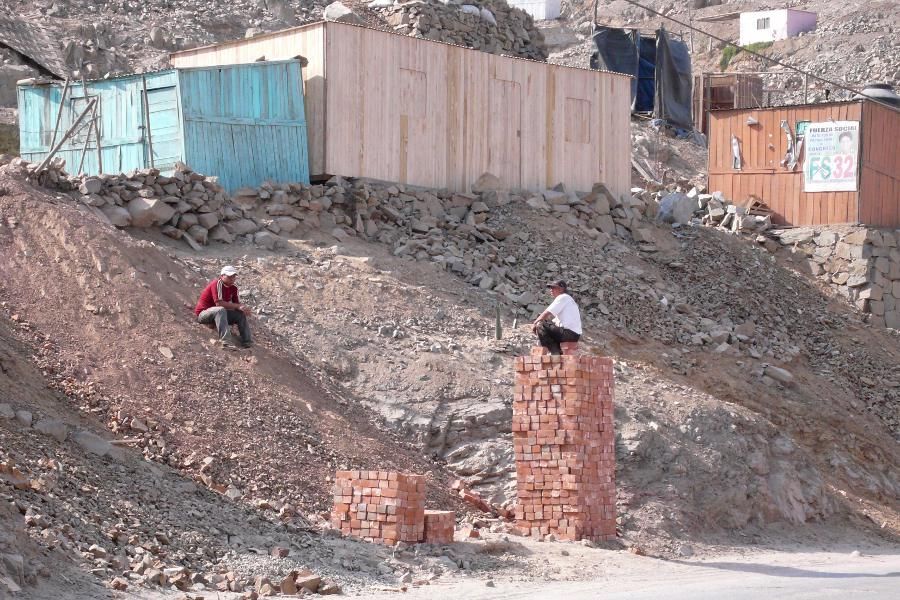
1.2 The sustainable territory: a common social and technical project
However, as a common project, building the city requires choices to be made, mediated by representative authorities at all levels. In a complex society, it is a courageous political project with a big "P", which involves a lot of political games and requires a certain degree of institutionalization in the territories concerned.
In multicultural countries and/or countries with a high diversity of natural conditions, building the city is also building cities. It is therefore, by caricaturing somewhat, to ensure that the elites of the centres of power are able to understand realities that are foreign to them personally but also to the often majority populations that elect them. This pattern can be found at all levels: from the highest spheres of national representation who are asked to understand the rest of the country (which is not obvious, even in France), to the councils of small and medium-sized cities who must integrate their peripheries, revitalize their city centres or integrate rapidly developing centres (sometimes of illegal construction) into a dynamic territory. The notion of integration naturally includes both the development of infrastructure and the enforcement or construction of standards that provide buildings with minimum comfort, safety and energy performance.
1.3 A disrupted urban fabric
This aspect of standardization is fundamental. To consider only one aspect of the issue, achieving a real qualification of buildings and urban spaces in order to prevent the development of professional activities that pollute, are dangerous, noisy or require special logistics in residential areas is, for example, extremely difficult in Peru. The massive rural exodus to neighbourhoods often populated exclusively by neo-urban people, and even built from scratch by themselves on invasions of the land, has not allowed a real culture of urban norms to emerge that allows sustainable living in densely populated areas. The Creole self of the Peruvian city has thus been disrupted in the space of 30 years in the major cities.
The most striking example is Lima, a city that was relatively modern in its urban choices at the beginning of the 1970s, and which saw some of its new districts deserted by the middle and upper Creole social classes. This then resulted in the creation of a new city for the latter, almost ex-nihilo. However, this attempt to recreate a sense of self has come up against a new wave of migration leading to a "encirclement" of the new Creole districts by land invasions. The result has been a chaotic development of transport infrastructure using the streets of these new elitist living spaces as a buffer between dormitory cities and employment centres.
1.4 The sustainable city: an organized and integrated city
This example, which lifts the veil very partially on a much more complex reality, shows that the prior integration of informal neighbourhoods into the process of reorganisation and planning of the city is essential. Beyond transport, it is indeed necessary to solve certain localized problems that affect the quality of life of all inhabitants: direct discharges of harmful substances (from the concentration of animals, to the presence of informal chemical laboratories, mechanical workshops, etc.), waste management that is often burned on site, connection to the wastewater network impossible without significant investments, etc. Above all, these difficulties are becoming more and more acute as the partially developed "encirclements" become themselves "encircled". When tons of garbage are burned on the sidewalks of a megalopolis of more than 10 million inhabitants, it is difficult to claim to fight global warming by making marginal gains in the energy performance of buildings or by creating sustainable ghettos districts whose logic of economic replication is questionable.
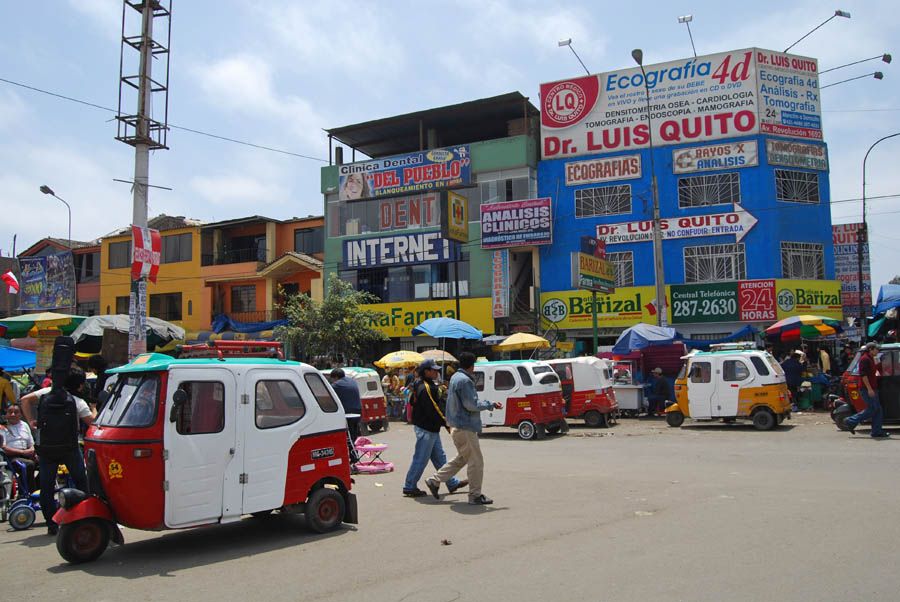
1.5 Criminal lobbies that respond to a need
However, this integration of marginal (but sometimes majority) neighbourhoods often comes up against a reality common to South America and South-East Asia: land trafficking. If no serious studies exist on the subject in Peru, it can be estimated today that if the profits of mafias were integrated into the national GDP, land trafficking would probably be in the top five or even three of the most important economic sectors (drug trafficking struggling for first place with mining activity).
While Northern countries often denounce powerful industrial lobbies that are slow to modify their value creation chains to accelerate ecological transition, emerging countries also face this type of criminal (land invasion and resale) or semi-criminal (development of land after legal purchase, but resale without property titles, respect for unbuildable areas, etc.) lobbies. Combating these is essential to create real urban plans. However, their short-term eradication remains impossible as they respond to needs that neither social housing policies nor an ultraliberal (supposed) self-regulation of the housing market are able to meet. They are inherent in the economic structure of countries with few institutions where the rate of informal work exceeds 50% (between 65% and 73% in Peru according to studies). This link is both psychological and social. Psychological because it illustrates mistrust of a political system that is considered to have never met the real needs of certain populations and therefore does not deserve to exist. Social because living is a strong act that influences family and community ties, while also highlighting practical aspects such as travel time. Choosing to invade a property also means obtaining the possibility of living at a reasonable cost within two hours of transporting your work. On this point, it is important to highlight the current social mix of these illegal or semi-legal neighbourhoods. Children of migrant families are for some part part of an elite that aspires to occupy managerial positions, formerly reserved for Creoles and located in central districts.
Pragmatism or political clientelism helping, many leaders of land invasion mafias are now integrated into municipal teams. It is now impossible to draw conclusions about such initiatives because the factors are so diverse and lead to different results. But there is a great risk that political clientelism will be further reinforced by this type of action when prioritizing certain actions to reorganize cities.

1.6 The individual lobby: or how to build your home without limits
Finally, it is necessary to mention one of the consequences of the absence of the State and communities in certain places. This results, even on legal land, in buildings built mostly without building permits and in no way respecting the height limits imposed for reasons of seismic risk or population pressure management. The lobbies involved are then individual, with each family lobbying and reaching an arrangement with the municipalities or directly with their officials for payment or not. The urban and economic development of a district thus results in the arrival of infrastructures, but also in an increase in its density. Each family often decides to rebuild floors to accommodate the new generation in more space and/or create rental space.
1.7 Catastrophic urban sprawl
To take the example of Lima, the urban expansion of the latter brings new problems.
1. The occupation of fertile land, rare on the Peruvian coast, integrated into the urban area. Today this phenomenon is more limited since the latter have been exhausted and new urbanizations are developing in more desert areas
2. A need to build a different construction reference frame according to the districts, as the extension of approximately 100km by 30km now includes different micro-climates.
3. Indirect occupation of certain lands still far from the city
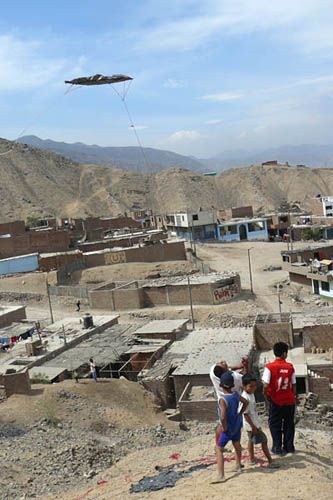
This third point is interesting because it is often forgotten about policies for managing urban sprawl in metropolitan areas. What can be described as indirect occupation is:
- The acquisition of land at low prices (but above market price) to anticipate expansion and achieve capital gains in the medium term.
- The development of cities that were once distant, but have become close by improving infrastructure and doubling or even tripling the average cruising speed of trucks and buses over the past 10 years.
- The urbanization of fertile coastal land for the holiday needs of a Limenian population that benefits primarily (or even exclusively, in the event of a slowdown) from the country's economic development.
- The displacement of crops and livestock areas feeding the city. It is necessary here to recall the specificity of the Pacific coast of South America. The strip of land in hot climates rarely exceeds 30km wide (except in some desert areas or alluvial valleys). The extension is therefore necessarily carried out on a North-South axis
This reality has the consequence of extending Lima's impact over 500 km to the north and south, as far as the land is concerned.
Socially, the effect is even more pronounced, because the disappearance of nearby fertile land necessarily leads to a change in the activity of local populations living mainly off the land (or the sea, but we will not develop it here). The disruption of the local economic environment leads to the arrival of real poverty for a majority (this is opposed to economically calculated poverty) and an exodus of young generations to Lima. The expansion of the city thus generates its own expansion, all the more damaging as these poor populations settle mainly on affordable land in the medium term... and are therefore invaded.
Moreover, by caricaturing somewhat, the disappearance of fertile land leads to fruit and vegetable production in desert areas. It requires a lot of resources and water and cannot be done by traditional farmers. The urban expansion of Lima therefore brings social conflicts to the whole of the central part of Peru. To address only one aspect of the issue, major water supply projects from the Andean regions are already being carried out or planned (via tunnels and aqueducts), disrupting the balance of regions located nearly 100 km from the coast and 2000 metres above sea level.
As can be seen in these examples, which are unfortunately mentioned too partially and caricatured in this article, indirect urban sprawl in Lima is a real problem to be addressed. By 2050, we might even fear that this example, which can be reproduced on a smaller scale in secondary cities, will transform the central part of the Peruvian coast into a continuous urban complex more than 800 km long. This is without real central communication axes due to the narrowness of the coastal strip and the impossibility of predicting the emergence of new population centres. This expansion will necessarily involve the detritus of some of the most fertile agricultural lands in the country, which will also substantially limit traffic on the Andean roads linking the main cities 200 km from the coast. By 2050, an ecological disaster covering more than 2,000,000,000 km2 is predicted for some of the world's most complex ecosystems.
While the lack of planning and institutionalization has devastating effects, there is still a need to focus on the micro level, that of building construction in the hot regions of Peru. Not only does the diversity of territories require localized policies (adaptation to climatic characteristics, opportunity of materials, etc.), but the informality of this sector influences the populations' vision of the right to build (and therefore of the impact of their choice of construction site). It is therefore important not to overlook any leads.
2. Buildings: the urgent need to disseminate sustainable practices in Peru
2.1 A building sector sensitive to lobbies
In a country where the dynamics of urbanization are extremely strong, the pressure on the housing market is to the advantage of the providers. In Peru, with some notable exceptions, the rule today is to comply with minimum construction standards: seismic risks, construction height (and still it depends on the neighbourhoods and the large-scale corruptibility of existing municipal teams), electricity, etc. No notion of energy performance or good ventilation is taken into account in operations intended for the greatest number of people. Although they are still present on the outskirts for reasons of luxury, the small private green spaces, traditionally present in front of each building, tend to disappear in order to offer parking spaces.
In addition, the type of constructions proposed is conditioned (but also influences) by already established channels. As in some African countries, cement in particular has become an extremely powerful oligopolistic lobby in Peru. It is thus able to control the players (even informal ones) entering this market.
2.2 Self-construction as an opportunity to build more sustainable?
Beyond the rapid analysis of a market according to academic criteria of exclusive consideration of the formal sector, it is necessary to focus on the (supposedly) hidden face of construction. The one of self-construction. It is now considered to account for between 60 and 75% of construction in the country and has consistently outperformed the formal market for at least five years, regardless of the geographical area. By way of comparison, this figure is only 20% in neighbouring Chile, a country that can be described as developed. This observation demonstrates the importance of taking local realities into account before defining an effective strategy for the dissemination of sustainable construction on the Latin American continent.
In Peru, self-construction includes:
1. the construction of housing, but also, anecdotally, of collective buildings in "marginal" neighbourhoods. In indigenous communities or urban invasions, it is therefore not uncommon for state authorities to "offer" the materials and, possibly, the skills of an architect or technician.
2. ancestral construction practices based on wood or adobe in the Amazon or on the coast,
3. spontaneous and transitional habitats made up of "pre-woven" plant panels
4. a complete self-construction from what are called noble materials in Peru (concrete, bricks, etc.)
5. partial self-construction, where the self-constructor uses a mason or architect in a formal or informal way.
Like the comparison with Chile, this list reflects, in increasing order (except for numbers 1 and 2), the socio-economic situation of selfbuilders. The higher the latter, the lower the degree of self-construction.
As self-construction now represents the overwhelming majority of operations, it seems appropriate to make it a priority target for the dissemination of good practices. Taking into account all the limitations mentioned above with regard to urban planning, it is now possible to:
- make the self-manufacturer aware of the relationship between sustainability and comfort
- train architects working in working-class neighbourhoods in simple and economical solutions: painting roofs white, reducing the quantity of concrete on certain parts, effective skylights for ventilation (even if they are raised), etc.
- concerning the workforce, we will come back to this later, the issue is more difficult, but still possible
This type of action is realistic insofar as basic earthquake-resistant construction is now partially taken into account in working-class neighbourhoods, when the self-manufacturer has the means to invest in the necessary materials. Knowing that the basic actions to make a building sustainable are low or not at all expensive, the prospects are interesting.
2.3 The qualification of the workforce: a necessary but difficult step
Qualifying the workforce that builds buildings is essential in Peru. Thus, many workers in the formal sector improvise themselves architects for self-builders on their rest time.
They then apply the skills learned on the formal sites. Even if the latter represent an almost marginal share of housing construction, it is therefore interesting to disseminate good practices. On the other hand, an additional limitation is the presence of mafias for the placement of workers. With little or no qualifications, the latter, such as the prime contractor and the project manager, pay criminal organizations for the right to work. The result is an extremely high turnover rate and the difficulty for construction companies to count on a stable workforce that shares a possible sustainable vision. Work in the construction industry is thus considered as a transitional situation in a professional life by a majority of workers.
2.4 The permanence of traditional sectors: an opportunity made possible by informality
In terms of materials, it seems essential to propose alternatives to the current diktat of uninsulated brick, corrugated plastic sheeting and the earthquake-resistant concrete/iron combination.
It is indeed possible to build quickly, economically and safely in urban environments by turning to traditional channels. However, this requires a minimum of R&D to formalize and standardize traditional practices.
Today, wood and raw earth find outlets and economic logic in informal construction because of their low cost. They must be managed (60% of Peruvian wood comes from illegal logging) and their uses defined so that they become alternatives to so-called "noble" building materials. Time is running out as the know-how disappears.
The situation is a little different for plant materials such as bamboo or the different parts of sugar cane. There is indeed a real artisanal sector of standardised slabs intended for the most precarious habitats or for the construction of temporary walls.
Nevertheless, if opportunities exist, the work must be done in the long term and with limited ambitions due to the power of the lobbies present in the construction sector in Peru. The bribery scandal linked to the civil construction company Odelbrecht, which sent most former presidents to prison, confirms this.
Although this article is limited to the Peruvian context, it nevertheless deals with issues that can be found in South America as well as in coastal cities in West Africa or certain regions of Asia. Implementing sustainable policies in most tropical areas based on what is being done in the "North" is a futile initiative. The first actions must affect the urban fabric and those who build it. By those who build it, we mean the powerful, but above all, the inhabitants, builders and local professionals. This statement may seem demagogic, but it is essential and the initiative is much less difficult than it seems, especially since these stakeholders take into account both the act of living in the city and that of building. However, it is necessary to know the local fabric, identify influencers and direct more budget towards actors and actions than reflection. Especially when it takes place in Geneva, Paris or New York....
Photo credit: LimaFotoLibre
Additional information in Spanish:
https://www.construccionyvivienda.com/component/k2/la-autoconstruccion-representa-el-60-de-los-gastos-del-sector-construccion-en-el-pais
https://andina.pe/agencia/noticia-vivienda-3-cada-4-casas-se-construyen-peru-son-informales-733681.aspx
https://elcomercio.pe/peru/cruel-negocio-trafico-terrenos-lucrativo-delito-expande-noticia-522510
https://www.bbc.com/mundo/noticias-america-latina-46912405




